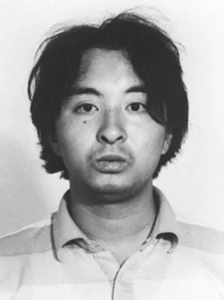Discover the chilling mystery of the Burari deaths, exploring shocking rituals, tragic truths,and unanswered questions in this gripping tale.
“Don’t feel like reading? Immerse yourself in the chilling tale through our audiobook version—just hit play and let the story unfold!” 👇👇👇
Introduction
The Burari Case, also referred to as the “Burari Mass Suicide,” sent shockwaves across India in July 2018. Eleven members of the Bhatia family, spanning three generations, were found dead under mysterious and chilling circumstances in their home in Delhi. The incident revealed a dark interplay of family dynamics, psychological manipulation, and unwavering belief in supernatural rituals. This blog delves into the details of the case, exploring the eerie rituals, the family’s history, and the unanswered questions that linger.
The Burari Family: A Snapshot of Normalcy
The Bhatia family, also known by the surname Chandawat in some records, appeared to lead a typical life. They owned a well-established grocery store and a plywood business, ensuring financial stability. The family comprised:
- Narayan Devi – The matriarch and oldest member.
- Lalit and Tina – The youngest couple, with their son Shivam.
- Bhuvanesh and Savita – A couple with three children: Nitu, Meenu, and Dhruv.
- Pratibha – A widow with a daughter, Priyanka, who was soon to be married.
Their neighbors described them as harmonious and caring, with no apparent signs of discord. However, every family harbors secrets, and the Bhatias were no exception.
The Fateful Discovery
On July 1, 2018, neighbors grew concerned when the family’s grocery shop, which usually opened at 5:30 a.m., remained shuttered. A friend of the family decided to check on them and discovered the main door ajar. What he saw inside was nothing short of a nightmare:
- Nine family members were found hanging from an iron grill in the central courtyard.
- Narayan Devi was discovered strangled in a separate room.
- All victims had their eyes blindfolded, mouths taped, and hands and feet bound.
The Diaries: A Window Into Rituals of Burari Case
During the investigation, police recovered 11 diaries spanning 11 years, filled with detailed instructions about spiritual rituals and practices. The instructions began in 2007, coinciding with the death of the family patriarch, Bhopal Singh. These diaries became central to understanding the bizarre and tragic event.

- Key Ritual Instructions:
- Participants were to tie their hands, blindfold themselves, and stand in a specific formation.
- They were to visualize a divine entity (symbolized as a “banyan tree”) enveloping them.
- Lalit, who claimed to channel his deceased father’s spirit, dictated these rituals.
The final entry eerily described the exact steps for the ritual that led to their deaths, suggesting they believed it would lead to salvation or divine intervention.
Lalit Bhatia: The Influencer of the Family
After Bhopal Singh’s death in 2007, Lalit took on the role of the spiritual guide for the family. Known for being reserved, Lalit reportedly began experiencing visions of his deceased father, claiming to communicate with him. Over time, the family began trusting Lalit as a medium to their late patriarch.
Lalit’s diary entries were not mere musings but specific instructions that the family followed religiously. The rituals promised prosperity and protection, further deepening their faith in Lalit’s spiritual leadership.
Questions That Remain Unanswered in Burari Case
Despite the extensive investigation, several questions remain unresolved:
- Why did all 11 members comply?
Even though the family was educated and aware, they unanimously followed Lalit’s instructions without protest. Was it blind faith, fear, or collective delusion? - Why was there no struggle?
Autopsy reports revealed no signs of physical resistance, except for minor indications that one member, Bhuvanesh, may have realized the danger at the last moment. - What psychological factors were at play?
Experts suggest shared psychosis (Folie à Deux) or mass hysteria as possible explanations for the family’s behavior.
The Role of Superstition in the Tragedy
The Burari case underscores the dangers of unchecked superstition and blind faith. The family’s unwavering belief in supernatural guidance led them to sacrifice their lives in a ritualistic act. This tragedy highlights the urgent need for mental health awareness and education about the consequences of superstitious practices.
Conclusion
The Burari deaths remain one of the most chilling and perplexing cases in Indian crime history. It’s a stark reminder of how faith, when taken to extremes, can lead to unimaginable outcomes. While the truth behind the family’s decisions may never be fully known, the case continues to haunt and intrigue those who delve into its mysteries.












